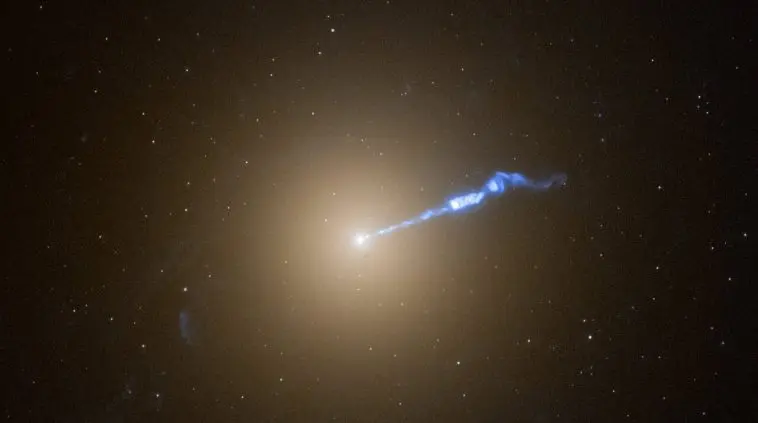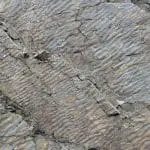Supermassive Black Holes
Many black holes within our galaxy have a mass of several times that of the sun. These are called stellar-mass black holes. Some of them may have formed during a supernova when the remaining core exceeds three solar masses.
However, our galaxy also contains one extremely massive black hole at its center. Named Sagittarius A* (“Sagittarius A star”), it has a mass of roughly 4.3 million suns. This black hole is surrounded by an accretion disk that emits powerful radio radiation and has now been directly imaged by a radio telescope array. Astronomers have monitored the orbital motions of stars very near the core of our galaxy — how they orbit this black hole — and from this have determined its mass.
Many supermassive black holes produce jets of material from their accretion disk. These jets are perpendicular to the disk, and the material within them is accelerated to nearly the speed of light. The black hole in M87 has such a jet. It is important to note that the material in jets does not come from the black hole itself. Rather, it is ejected from the accretion disk outside the event horizon.
Supermassive black holes act as gravitational anchors for stars in the core of a galaxy. Such black holes are most likely part of the original creation and have no predecessor. They act as important confirmations of theories of physics, such as general relativity.
Black Hole Growth and Consequences
Anything that enters the event horizon of a black hole must fall into the singularity and add to its mass. And since the radius of the event horizon — the Schwarzschild radius — is proportional to the mass of the singularity, it expands whenever anything falls inside. Thus, black holes grow in size as they consume material that crosses the event horizon.
There is something disconcerting about the event horizon being a point of no return. Hollywood often depicts black holes as invisible predators that attract and consume everything in their path. However, we have seen that black holes are not exactly invisible. They are black, blocking any light directly behind their disk and distorting the appearance of light that passes close to the event horizon. So, you could easily tell if you were close to a black hole.
Furthermore, black holes are not able to suck in just anything for the same reason the sun does not suck in all the planets. The sun does gravitationally pull planets, but planets have tangential motion that prevents them from coming dangerously close to the sun. They orbit — “falling around” the sun rather than falling into it. Likewise, objects sufficiently far from a black hole would be deflected by its gravity but not sucked in.
In fact, if we could compress the sun into a black hole of equal mass, the planets would continue to orbit as usual. Only objects that come within about three Schwarzschild radii of a black hole are in danger of being pulled into its event horizon.1 The Schwarzschild radius of the sun is only 1.8 miles. Thus, planets would be in no danger since they orbit millions of times farther away.
Black holes are certainly fascinating. They confirm that general relativity is a good approximation of the way God upholds His creation in terms of gravity. A number of stellar-mass black holes are perhaps the remains of a star that experienced a supernova. And supermassive black holes are apparently part of the original creation, acting as gravitational anchors for stars in the core of a galaxy.
Footnote
- This is called the marginally stable radius. Orbits beyond this distance are safe because a slight nudge in the orbit results in another stable orbit. However, inside this radius, a small nudge in the wrong direction could potentially cause the object to pass inside the event horizon.






